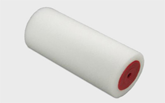Which Paintbrush Should You Use?(1)
Aug. 06, 2016You need only a few brushes to cover the vast majority of DIY painting chores. So here are four things to keep in mind next time you go shopping for a paint brush:

Bristle Type: Paint brushes come with two basic types of bristles (sometimes called filaments): natural and synthetic. Natural bristles are made from some sort of animal hair, such as hog or badger. Synthetic bristles are often made from nylon, polyester, or a combination of both. Natural-bristle brushes are best for applying oil-based alkyd paints, and synthetic-bristle brushes are recommended for water-based latex paints. If you try to apply latex paint with a natural-bristle brush, the bristles will absorb the water in the paint and become extremely limp, making it virtually impossible to spread the paint.
Some synthetic brushes can be used to apply both latex and alkyd paints. Be sure to check the packaging on the brush to ensure it's compatible with the paint you're using.
Brush Width: Brushes come in a wide variety of widths, commonly ranging from about 1 inch to 5 inches, named inch paint brush. Obviously you can apply more paint with a wider brush, but you should always match the brush width to the surface being painted. And it's best to choose a brush that's slightly narrower than the surface. For example, if you're painting a 4-inch-wide window casing, use a 3-1/2-inch-wide brush. A brush measuring 4 inches or wider will overlap the edges of the casing and drip paint.














